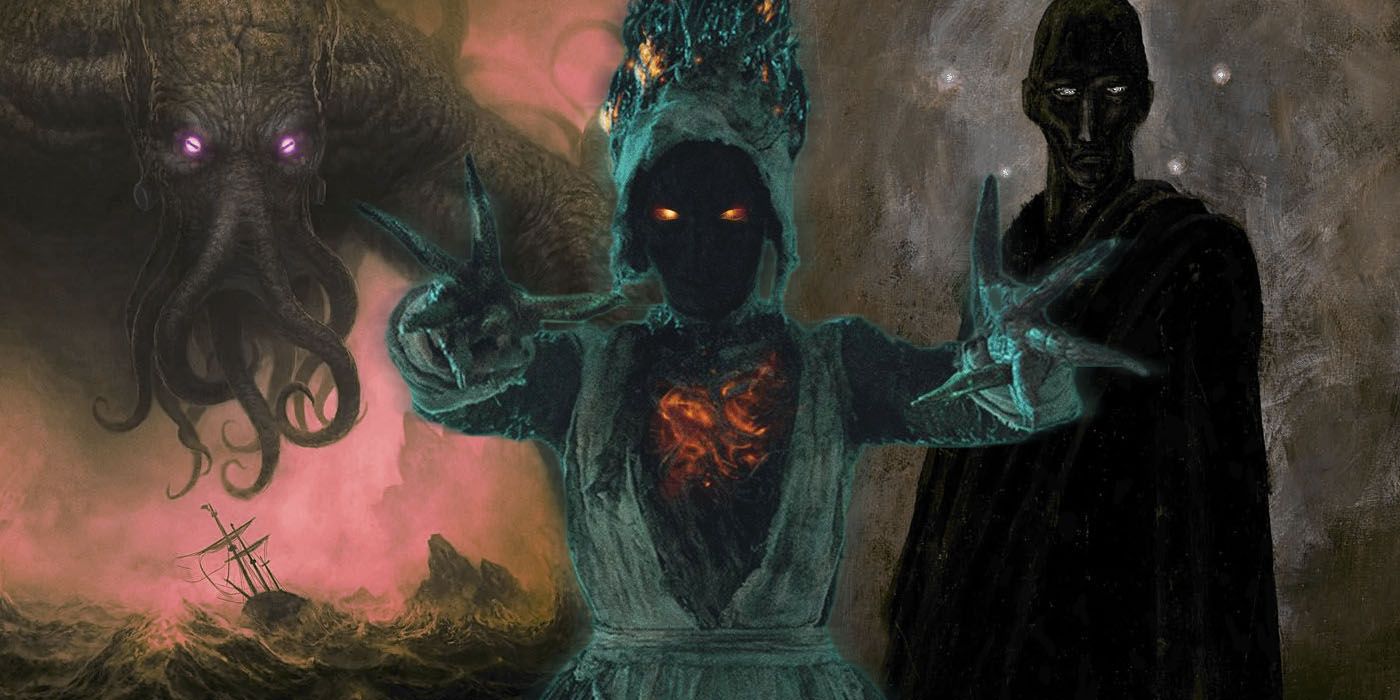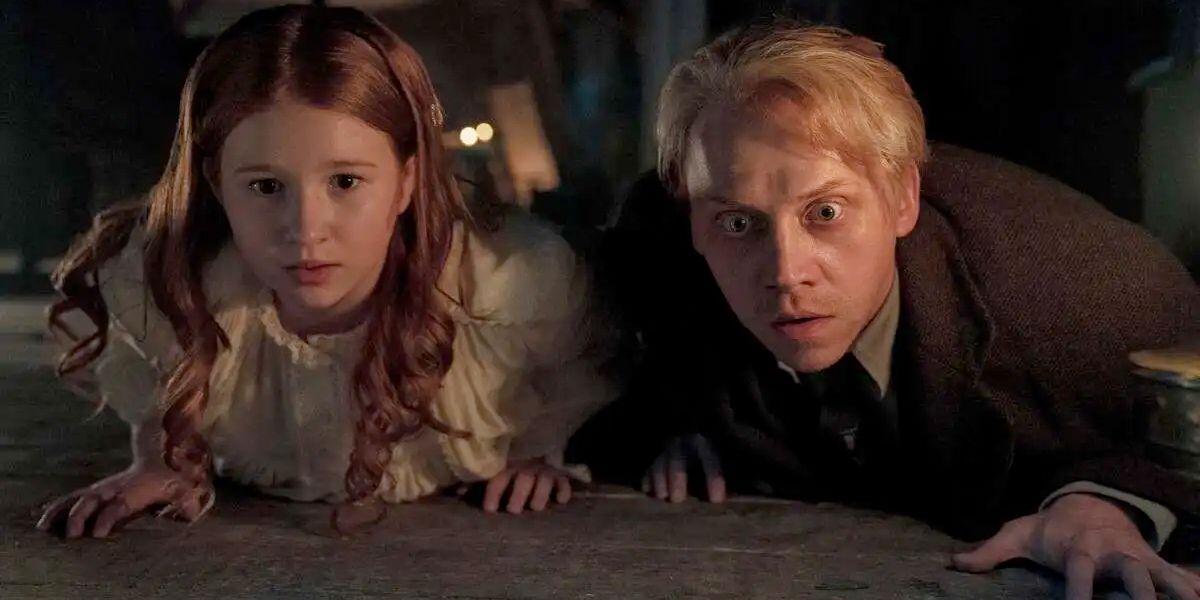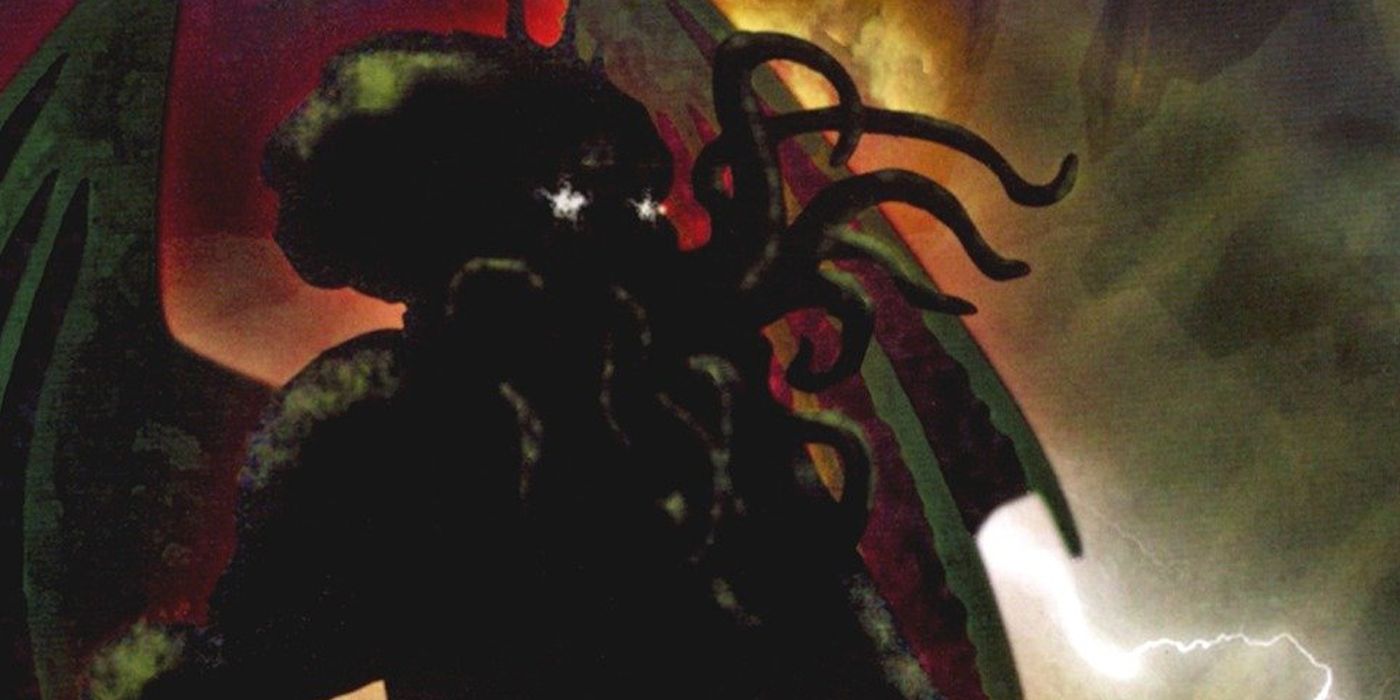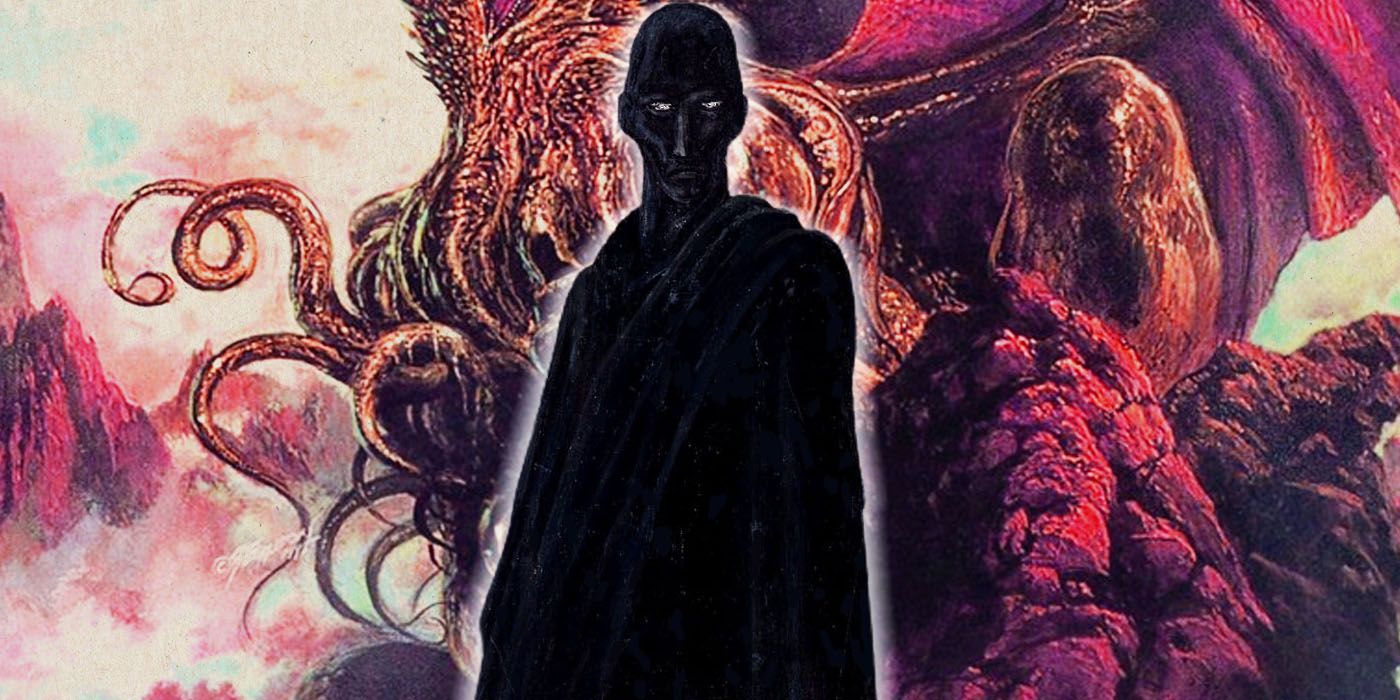When adapting H.P. Lovecraft's "Cthulhu Mythos," there is an inherent understanding that the rules of space and time are a more relative concept than a concrete one. The laws of nature and space are more anthropocentric ideas, and the few people who break these laws are either assisted by malignant beings or have access to tomes that surpass the human experience. Following "The Call of Cthulhu" and "The Dunwich Horror," the Cthulhu Mythos has numerous stories and devices to continue to adapt, but the depth of the universe and abilities should be next.
Throughout the Cthulhu Mythos, people, beings, and locations exist where the laws of nature are virtually nonexistent. People have cheated death, walked through dimensions, and have even had their consciousness replaced over space and time due to the beings and texts within the Mythos. Though one being and text were already introduced in the theoretical cinematic universe, there is a far more malevolent being that has yet to be introduced in a story that takes humans away from Earth for the first time in the series: "The Dreams in the Witch House."
The Dreams in the Witch House Is Both Sinister and Alien
"The Dreams in the Witch House" is one of the hallmark Cthulhu Mythos stories because it forces the main character into unfamiliar and alien locations. The story revolves around Walter Gilman, a student at Miskatonic University who rents a room in the fabled "Witch House," which is believed to be cursed by Keziah Mason. Keziah was accused of witchcraft before her mysterious disappearance in custody. Gilman, who lives in the attic, realizes that the geometry could possibly allow for passage between dimensions. Through these travels, he meets Keziah and her familiar, a rat with human features known as Brown Jenkin, as he starts having bizarre dreams.
Gilman started having vivid dreams of floating through alien cities, finding unexplainable entities, and viewing the home of the fabled Elder Things during his time in the witch house. Originally, these dreams were more fantastic, but they grew more sinister over time. During his waking life, he started seeing Keziah and Brown Jenkin at random places, and their presence gradually became more physical and terrifying. Soon, his dreams became more realistic, as he was able to accidentally break off a piece of an Elder Thing statue but lacked the physical evidence to prove it.
His experiences take a horrific turn when he is introduced to a mysterious figure, Nyarlathotep, and is coerced into signing the Book of Azathoth. Following this moment, he is forced to help kidnap children, and he starts finding physical clues of his dreams in his waking life. He stops Keziah's attempted sacrifice of a child by strangling her to death but does so in vain as Brown Jenkin kills the child. Gilman escapes the strange dimension but goes deaf in the process. Nights later, he is killed when Brown Jenkin burrows out of his chest. The story ends when the house is torn down, where they find evidence of Gilman's adventures, including the skeletal remains of Keziah, a ratlike being, and numerous young children.
Witch House Expands the Universe
What makes "Dreams in the Witch House" a horrifying tale to adapt is the questions it raises about dreaming. Most of the tale comes off as a fever dream as the line between dream and reality becomes indistinguishable and Gilman grows more horrified at the acts he commits. Believing them to be dreams at first, he is horrified to find out that he is committing these atrocities in real life and tries to stop them. The thought that he believed his travels through space and time were merely dreams is a scary idea since it forces one to question their own dreams and recollections, as well as what they speak to in dreams.
The story also adds something that was only hinted at in the universe so far: alien locations. The Cthulhu Mythos is best known for its use of cosmic horror, as so much of the horror is taken from space and unearthly concepts. Gilman, in the text, explores otherworldly cities and travels through different structures through portals and weird space-time mechanisms. This aspect is important because it draws a familiar figure into an unknown environment. Subverting "Call of Cthulhu" and "Dunwich Horror" by taking the horror away from Earth opens the possibility for different entities and travels throughout the universe, but the story helps add something to the Cthulhu Mythos films that solidifies a cinematic universe.
Nyarlathotep Is a Perfect Central Villain
Though the Cthulhu Mythos wasn't created with the idea of good versus evil, no entity embodies the human idea of evil quite like Nyarlathotep. Known as the messenger of the Outer Gods, Nyarlathotep is among the most powerful and unpredictable beings in the Mythos. He's highly intelligent and deceitful, and he has over a thousand forms, but unlike the other entities in the universe, he has taken an interest in humans and delights in their suffering. Nyarlathotep's motives are mysterious due to his distrustful ways, but he can disguise this through his numerous forms.
As shown in "The Dreams in the Witch House," he's powerful enough to manipulate and coerce Gilman into signing the Book of Azathoth but does so through the form of "The Black Man." This image is his most common form among humans, though he has several he can cycle through to keep his motives secret. He can move freely through stories and from person to person, as his reasoning for chaos remains a mystery. His active place as a deity taking a personal interest in humans is terrifying and makes the universe more compelling. Nyarlathotep's name is prevalent in stories that he doesn't appear in and he instantly poisons every account from characters around the protagonist with his influence.
What makes "The Dreams in the Witch House" work in this regard is that it has a human exploring a vast universe and a cosmic entity taking an interest in a person. Much of the Cthulhu Mythos interactions are incidental, but the idea of an unimaginable being communicating and manipulating a person is among the most terrifying aspects of the series. With both Nyarlathotep and the vast knowledge present in the Mythos, there's no limit on how far the cinematic universe can reach.




